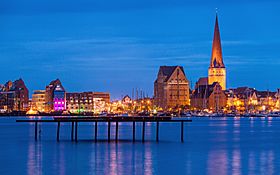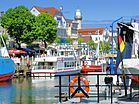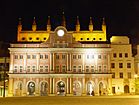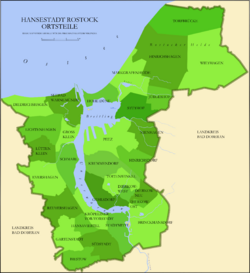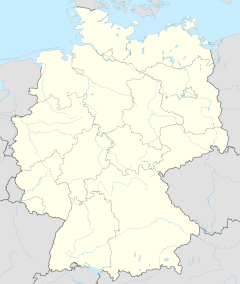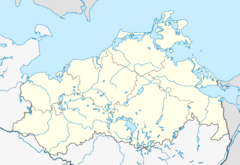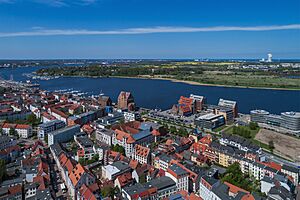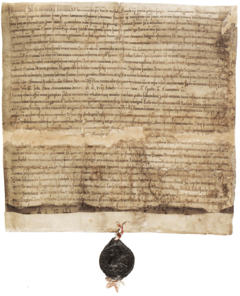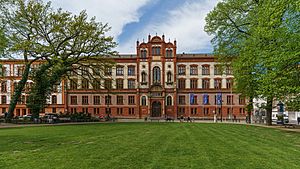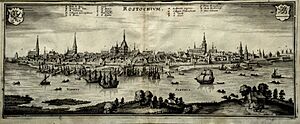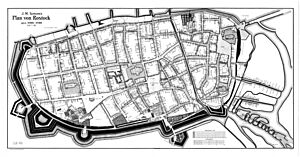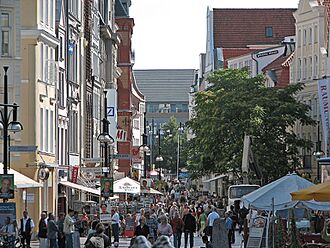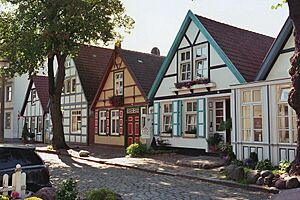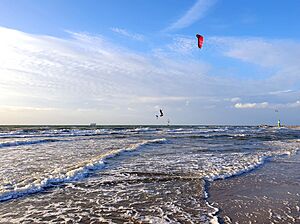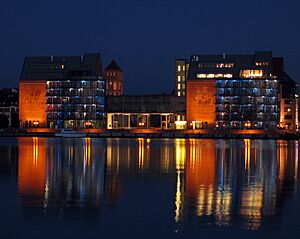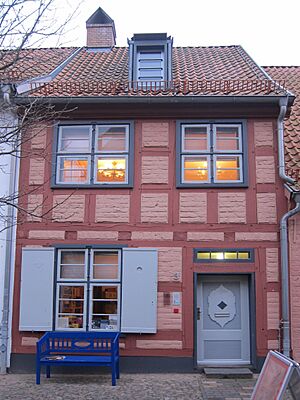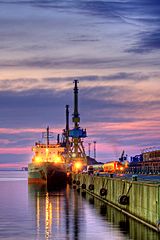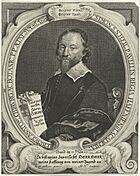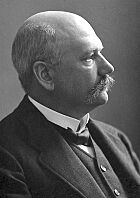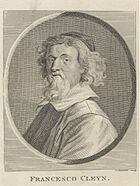Rostock facts for kids
Quick facts for kids
Rostock
|
|||
|---|---|---|---|
|
From top: Rostock skyline, St. Mary's Church, St. Peter's Church, seaside resort Warnemünde, city hall, Warnemünde beach
|
|||
|
|||
| Country | Germany | ||
| State | Mecklenburg-Vorpommern | ||
| District | Urban district | ||
| Subdivisions | 21 boroughs | ||
| Area | |||
| • Total | 181.44 km2 (70.05 sq mi) | ||
| Elevation | 13 m (43 ft) | ||
| Population
(2022-12-31)
|
|||
| • Total | 209,920 | ||
| • Density | 1,156.97/km2 (2,996.53/sq mi) | ||
| Time zone | UTC+01:00 (CET) | ||
| • Summer (DST) | UTC+02:00 (CEST) | ||
| Postal codes |
18001–18147
|
||
| Dialling codes | 0381 | ||
| Vehicle registration | HRO | ||
Rostock is a big city in Germany, located in the state of Mecklenburg-Vorpommern. It's the largest city in this state. Rostock is also known as a "Hanseatic and University City." This means it was once part of the powerful Hanseatic League, a group of trading cities. It also has a very old and famous university.
Rostock is home to about 210,000 people. It's the third-largest city on Germany's Baltic Sea coast. It was also the most important port city in former East Germany.
The city sits where the River Warnow flows into the Baltic Sea. The city stretches about 16 kilometers (10 miles) along the river. Most people live on the west side of the river. The east side has the port, factories, and a large forest called the Rostock Heath. Rostock's name comes from a Slavic word meaning "fork of a river."
Rostock is the main economic hub of its state. Its port is the fourth largest in Germany and the biggest on the German Baltic coast. Many ferries travel from Rostock to Scandinavia. The city also has an airport, Rostock–Laage Airport.
Rostock is famous for the University of Rostock, founded in 1419. It's the oldest university in the Baltic region and one of the oldest in the world! The university's hospital is also very important for the state.
Contents
History of Rostock
Early Beginnings
In the 11th century, a group of Slavic people built a settlement by the Warnow river. They called it Roztoc, which means "fork of a river." This is where the name Rostock comes from.
In 1161, the Danish king Valdemar I burned the town. After that, German traders moved in and rebuilt it. The town was first made up of three separate areas:
- Altstadt (Old Town) with St. Peter's Church.
- Mittelstadt (Middle Town) with St. Mary's Church.
- Neustadt (New Town) with St. James's Church (which was later taken down).
In 1218, Rostock was given special city rights, known as Lübeck law, by Prince Heinrich Borwin. This helped the city grow.
The Hanseatic League Era
Rostock became part of the Hanseatic League in 1251. This was a powerful group of trading cities around the Baltic Sea. By the 14th century, Rostock was a strong port city with 12,000 people. It was the largest city in Mecklenburg. Ships were built here for trade across the Baltic Sea.
To make sure it could always reach the sea, Rostock took over the fishing village of Warnemünde in 1323. In 1419, the University of Rostock was founded. It is the oldest university in northern Europe and the Baltic Sea region.
Challenges and Changes
By the late 1400s, the dukes of Mecklenburg took more control over Rostock. This led to conflicts and less power for the city. The dukes even tried to tear down the city walls.
The city walls were rebuilt between 1575 and 1577. You can still see the Stein Gate from this time. It has a message that says, "Let there be harmony and public happiness within you." This refers to the city's struggles with the dukes.
Rostock's important location made other countries want to control it. The Danes and Swedes occupied the city during the Thirty Years' War (1618–48) and again from 1700 to 1721. Later, in the early 1800s, the French, led by Napoleon, occupied Rostock for about ten years.
Growth in the 19th Century
In the first half of the 1800s, Rostock became important again for trade, especially in wheat. Later, in the 1850s, industries like shipyards grew. The first ships in Germany that used propellers were built here.
The city grew bigger, with new areas built for the increasing population. Two important new areas were:
- Steintor-Vorstadt in the south, where wealthy citizens lived in large houses.
- Kröpeliner-Tor-Vorstadt in the west, built for workers and factories. The main shipyard, Neptun, was also nearby.
The 20th Century
In the 1900s, Rostock became a center for building airplanes. Companies like Arado Flugzeugwerke and Heinkel had factories here. The world's first working jet plane prototype had its test flights at the Heinkel facilities in Rostock.
In the 1930s, the Nazi Party gained power in Germany. During this time, Jewish people in Rostock faced terrible persecution. On November 10, 1938, the synagogue (a Jewish place of worship) in Rostock was destroyed by fire. Many Jewish people were attacked and put in prison.
As Germany prepared for war, Rostock's factories became even more important. The city's population grew quickly. During World War II, Rostock was heavily damaged by bombing. Factories, churches, and other historic buildings in the city center were hit. The city was captured by Soviet forces in May 1945.
After the war, Rostock became the largest seaport in East Germany. The state expanded the shipyards. Many German refugees moved to Rostock, and the city's population grew to 260,000. After Germany was reunified in 1990, Rostock lost its special status as East Germany's main port. The population went down for a while but has been growing again since 2006. Today, Rostock and Warnemünde are popular places for tourists on the Baltic Sea.
Rostock's Population
Rostock has about 210,000 people and is the biggest city in the state of Mecklenburg-Vorpommern. When Rostock joined the Hanseatic League in the 15th century, it became a much larger city.
Rostock's population reached over 100,000 in 1935. During the East Germany era, many sailors and boatmen moved to Rostock. This also brought many port and other industries to the city. Rostock's population peaked in 1988 with about 254,000 people.
After Germany was reunified, Rostock's population went down. Many people moved to former West Germany. However, since 2003, Rostock's population has started to grow again. This is partly because of students and new companies moving to the city.
| Rank | Nationality | Population (31.12.2022) |
|---|---|---|
| 1 | 2,816 | |
| 2 | 2,439 | |
| 3 | 1,574 | |
| 4 | 1,382 | |
| 5 | 1,033 | |
| 6 | 794 | |
| 7 | 714 | |
| 8 | 545 | |
| 9 | 465 | |
| 10 | 385 |
Geography and Climate
Where is Rostock Located?
Rostock is located in the middle of Mecklenburg-Vorpommern's Baltic Sea coast. The Warnow river flows through the city.
The seaside part of Rostock, called Rostock-Warnemünde, is about 16 kilometers (10 miles) north of the old city center. The western and southeastern parts of the city are the most crowded. The large overseas port is to the east of Rostock. The city stretches about 21.6 kilometers (13.4 miles) from the Baltic Sea southwards and 19.4 kilometers (12 miles) from east to west.
Rostock's Climate
Rostock has an oceanic climate, which means it's influenced by the Baltic Sea. This makes its weather similar to Denmark and southern Sweden. Summers can have strong heat waves, but the sea keeps the temperatures from getting too extreme. Winters are also milder because of the sea's influence.
| Climate data for Rostock (Warnemünde), 1991–2020 normals) | |||||||||||||
|---|---|---|---|---|---|---|---|---|---|---|---|---|---|
| Month | Jan | Feb | Mar | Apr | May | Jun | Jul | Aug | Sep | Oct | Nov | Dec | Year |
| Record high °C (°F) | 14.0 (57.2) |
17.0 (62.6) |
22.3 (72.1) |
29.5 (85.1) |
32.8 (91.0) |
35.0 (95.0) |
35.5 (95.9) |
36.9 (98.4) |
32.4 (90.3) |
26.1 (79.0) |
19.5 (67.1) |
15.5 (59.9) |
36.9 (98.4) |
| Mean maximum °C (°F) | 10.1 (50.2) |
10.9 (51.6) |
15.7 (60.3) |
22.0 (71.6) |
26.2 (79.2) |
28.9 (84.0) |
30.3 (86.5) |
30.6 (87.1) |
25.4 (77.7) |
19.8 (67.6) |
14.5 (58.1) |
10.7 (51.3) |
32.5 (90.5) |
| Mean daily maximum °C (°F) | 3.8 (38.8) |
4.4 (39.9) |
7.3 (45.1) |
12.2 (54.0) |
16.4 (61.5) |
19.7 (67.5) |
22.0 (71.6) |
22.2 (72.0) |
18.5 (65.3) |
13.3 (55.9) |
8.0 (46.4) |
4.9 (40.8) |
12.7 (54.9) |
| Daily mean °C (°F) | 1.9 (35.4) |
2.2 (36.0) |
4.4 (39.9) |
8.4 (47.1) |
12.5 (54.5) |
16.0 (60.8) |
18.4 (65.1) |
18.4 (65.1) |
15.0 (59.0) |
10.5 (50.9) |
6.0 (42.8) |
3.0 (37.4) |
9.7 (49.5) |
| Mean daily minimum °C (°F) | −0.2 (31.6) |
0.1 (32.2) |
1.8 (35.2) |
5.2 (41.4) |
9.0 (48.2) |
12.6 (54.7) |
15.0 (59.0) |
15.0 (59.0) |
12.0 (53.6) |
7.9 (46.2) |
4.0 (39.2) |
1.1 (34.0) |
6.9 (44.4) |
| Mean minimum °C (°F) | −7.7 (18.1) |
−6.0 (21.2) |
−2.9 (26.8) |
0.4 (32.7) |
4.3 (39.7) |
8.7 (47.7) |
11.2 (52.2) |
11.1 (52.0) |
7.7 (45.9) |
2.5 (36.5) |
−1.6 (29.1) |
−5.8 (21.6) |
−9.8 (14.4) |
| Record low °C (°F) | −17.8 (0.0) |
−18.4 (−1.1) |
−15.1 (4.8) |
−4.0 (24.8) |
0.0 (32.0) |
2.5 (36.5) |
7.3 (45.1) |
6.5 (43.7) |
3.4 (38.1) |
−1.8 (28.8) |
−9.3 (15.3) |
−15.6 (3.9) |
−18.4 (−1.1) |
| Average precipitation mm (inches) | 46.2 (1.82) |
38.2 (1.50) |
39.2 (1.54) |
34.2 (1.35) |
49.7 (1.96) |
67.8 (2.67) |
69.8 (2.75) |
68.5 (2.70) |
56.1 (2.21) |
48.1 (1.89) |
45.7 (1.80) |
50.9 (2.00) |
614.3 (24.19) |
| Average precipitation days (≥ 1.0 mm) | 16.6 | 14.8 | 13.5 | 11.3 | 12.5 | 13.5 | 14.0 | 14.8 | 13.4 | 15.1 | 15.9 | 17.4 | 171.9 |
| Average snowy days (≥ 1.0 cm) | 5.9 | 6.0 | 3.4 | 0.1 | 0 | 0 | 0 | 0 | 0 | 0 | 0.8 | 3.2 | 19.4 |
| Average relative humidity (%) | 84.5 | 82.1 | 79.1 | 74.4 | 74.4 | 74.2 | 74.7 | 74.8 | 77.4 | 80.7 | 84.5 | 85.5 | 78.9 |
| Mean monthly sunshine hours | 49.2 | 67.7 | 133.3 | 207.8 | 260.3 | 250.4 | 252.1 | 224.8 | 168.7 | 109.1 | 53.6 | 37.1 | 1,813.9 |
| Source 1: World Meteorological Organization | |||||||||||||
| Source 2: Météo Climat Infoclimat | |||||||||||||
Main Sights and Attractions
Exploring Rostock City
One of the prettiest places in Rostock is the Neuer Markt (New Market Square). Here you'll find the Town Hall, which was first built in the 13th century. It was later changed in the 1700s with a fancy Baroque style front. The square also has six old, beautiful houses from the 15th and 16th centuries.
The 15th-century Kerkhofhaus is considered the best-preserved old brick house in Rostock.
St. Mary's Church (Marienkirche) is a huge church made of brick. It was built in the 13th century and made even bigger later. Inside, there's an amazing astronomical clock from 1472.
The main street for walking and shopping is Kröpeliner Straße. It leads from the New Market to the 14th-century Kröpeliner Tor, an old city gate. The main buildings of Rostock University are on Universitätsplatz, in the middle of this street. You can also see the lively "fountain of zest for life" there.
The Kloster St Katharinen (Convent of St. Catherine) is an old Franciscan monastery from 1243. Today, it's home to the Academy of Music and Theatre.
The Brick Gothic Nikolaikirche (St. Nicholas Church) is the oldest church in Rostock, built in the mid-13th century. It was damaged in World War II but has been restored. Now, it's used for exhibitions and concerts because it has great sound.
You can still see parts of the old medieval city wall and four of its city gates. Rostock also has many herring gulls that you'll hear squawking loudly!
Visiting Warnemünde
Warnemünde is the part of Rostock right by the sea. It's a very popular spot for both locals and tourists. People love the old houses, the big sandy beach, the lighthouse, and the old fisherman's port.
Rostock's Economy
Rostock's economy is mostly about things related to the sea, like shipbuilding. It also has high-tech industries such as IT, biotechnology, and medical engineering. The University of Rostock and tourism are also very important.
Here are some major companies in Rostock:
- Maritime Industry
- Caterpillar Inc.: Makes diesel engines for ships.
- Deutsche Seereederei Rostock: Deals with transport, cruises, and tourism.
- Neptun Werft: A shipyard that builds ships.
- AIDA Cruises: A German company famous for cruises.
- Other Engineering
- Nordex SE: A big company that makes wind turbines.
- Liebherr: Makes cranes.
- Tourism Industry
- Scandlines: A company that operates ferries between Germany and Scandinavia.
- Other Businesses
- Hanseatische Brauerei Rostock: A German brewery that makes local beer.
- Rostock University Hospital (Universitätsmedizin): A large hospital.
- Yara International: Supplies plant nutrients for farming.
Education in Rostock
Rostock is home to one of the oldest universities in the world, the University of Rostock. It was founded in 1419 and is the third oldest university in Germany that has been open continuously. The university also has a beautiful botanical garden.
The Academy of Music and Theatre (Hochschule für Musik und Theater) offers degrees in music and acting. It was founded in 1994. The school has a large opera stage and concert halls, and there are concerts almost every day.
Rostock also has important research centers. These include the Max Planck Institute for Demographic Research and the Leibniz Institute for Catalysis. There are also two branches of Fraunhofer Institutes, which focus on computer graphics and production technology.
Culture and Fun
Theatre and Music
The main theater in the city is the Volkstheater Rostock. This is where the Norddeutsche Philharmonie Rostock orchestra performs.
Exciting Events
Rostock hosts the yearly Hanse Sail festival. During this event, many large sailing ships and old museum vessels come to the sea. Over 1.5 million people visit this festival!
There's also an annual jazz festival called Ostsee-Jazz (Baltic Sea Jazz) in June.
Cinemas
The Lichtspieltheater Wundervoll is Rostock's art house cinema. It shows a variety of films every day. It's also the main place for Rostock's Film Festival, the Festival im Stadthafen (FISH).
Museums and Zoo
Rostock has many interesting places to visit:
- Rostock Art Gallery (Kunsthalle Rostock)
- Museum of Cultural History (Kulturhistorisches Museum)
- Stasi Museum: Learn about the secret police from East Germany.
- Warnemünde Local History Museum (Heimatmuseum Warnemünde)
- Shipbuilding and Shipping Museum (Schiffbau- und Schifffahrtsmuseum)
- Rostock Zoo: See animals from all over the world.
- Walter Kempowski Archive: Dedicated to the writer Walter Kempowski.
- Max-Samuel-Haus: Rostock's Jewish Heritage Centre.
Food and Drink
Rostock has its own local beer called Rostocker Pilsner. It's made at the Hanseatische Brauerei Rostock. A special light beer called Heller Freude was even brewed to celebrate Rostock's 800th birthday!
Sports in Rostock
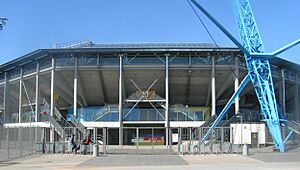
Rostock is home to several sports teams:
| Club | Sport | Founded | League | Venue | Head Coach | Website |
|---|---|---|---|---|---|---|
| Hansa Rostock | Football | 1965 | 3. Liga | Ostseestadion | Bernd Hollerbach | [1] |
| Rostock Seawolves | Basketball | 1994 | Basketball Bundesliga | Stadthalle Rostock | Przemyslaw Frasunkiewicz | [2] |
| Rostocker FC 1895 | Football | 1895 | NOFV-Oberliga Nord (5th division) | Sportpark am Damerower Weg | Jan Kistenmacher | [3] |
| HC Empor Rostock | Handball | 1946 | 3. Bundesliga | Rostocker Stadthalle | Maik Handschke | [4] |
| SV Warnemünde | Volleyball | 1990 | 3rd league (men and women team) | Sporthalle Gerüstbauerring | [5] | |
| Piranhas Rostock | Ice hockey | 1953 | Oberliga (3rd division) | Eishalle Rostock | Henry Thom | [6] |
| Rostocker Nasenbären | Skater hockey | 2005 | Inline-Skaterhockey-Bundesliga (1st league) | OSPA-Arena | Dimitri Kramarenko | [7] |
| HSG Warnemünde | Water polo | 1971 | Oberliga SH-MV (3rd league) | Neptun-Schwimmhalle | [8] |
Getting Around Rostock
By Car
You can reach Rostock by major highways (Autobahn). The A 20 connects it to Hamburg and Lübeck. The A 19 connects it to Berlin.
Public Transport
Rostock Hauptbahnhof (main train station) has fast train connections to Hamburg and Berlin. From there, you can reach almost any other European city.
Rostock also has a tramway network with six lines that serve the city and its suburbs. There are also many buses and a few ferries that cross the Warnow river.
By Ferry or Ship
Rostock is Germany's largest Baltic port. It's a main hub for ferry companies like Scandlines and TT-Line. These ferries connect Rostock to big cities in Scandinavia. Rostock also welcomes the most cruise tourists in Germany each year.
Ferries travel to:
- Helsinki, Finland
- Gedser, Denmark
- Trelleborg, Sweden
- Nynäshamn, Sweden
- Visby, Sweden
By Air
The Rostock–Laage Airport has flights to major German and international places. You can find regular flights to cities like Munich. The closest bigger international airports are in Hamburg and Berlin. Rostock is also directly connected to Berlin Brandenburg Airport by the IC 17 train.
Rostock's Twin Cities
Rostock has special partnerships with other cities around the world. These are called "twin towns" or "sister cities":
 Szczecin, Poland (1957)
Szczecin, Poland (1957) Turku, Finland (1959)
Turku, Finland (1959) Dunkirk, France (1960)
Dunkirk, France (1960) Riga, Latvia (1961)
Riga, Latvia (1961) Antwerp, Belgium (1963)
Antwerp, Belgium (1963) Aarhus, Denmark (1964)
Aarhus, Denmark (1964) Gothenburg, Sweden (1965)
Gothenburg, Sweden (1965) Bergen, Norway (1965)
Bergen, Norway (1965) Rijeka, Croatia (1966)
Rijeka, Croatia (1966) Varna, Bulgaria (1966)
Varna, Bulgaria (1966) Bremen, Germany (1987)
Bremen, Germany (1987) Dalian, China (1988)
Dalian, China (1988) Raleigh, United States (2001)
Raleigh, United States (2001) Guldborgsund, Denmark (2014)
Guldborgsund, Denmark (2014)
Famous People from Rostock
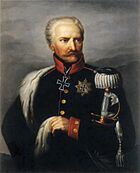
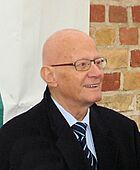
Leaders and Thinkers
- Henry Borwin I, Lord of Mecklenburg (??–1227): A lord of Mecklenburg.
- Gebhard Leberecht von Blücher (1742–1819): A famous Prussian field marshal.
- Joachim Gauck (born 1940): A civil rights activist and former President of Germany.
- Eva-Maria Kröger (born 1982): The current Mayor of Rostock since 2023.
- Albrecht Kossel (1853–1927): A biochemist who won the Nobel Prize in 1910 for his work on DNA.
- Hans von Ohain (1911–1998): A physicist and engineer who worked on jet engines in Warnemünde.

Artists and Writers
- Francis Cleyn (c. 1582 – 1658): A painter and tapestry designer.
- Edvard Munch (1863–1944): A famous Norwegian painter who lived in Rostock for a time.
- Dörte Helm (1898–1941): A Bauhaus artist, painter, and graphic designer.
- Walter Kempowski (1929–2007): A well-known German writer.
- Marteria (born 1982): A popular hip hop artist.

Sports Stars
- Siegfried Brietzke (born 1952): A German rower who won Olympic gold medals.
- Christian Schenk (born 1965): A decathlete who won an Olympic gold medal in 1988.
- Jan Ullrich (born 1973): A famous cyclist who won the Tour de France and Olympic medals.
- André Greipel (born 1982): A professional road bicycle racer.
- Hannes Ocik (born 1991): A rower who is a three-time world champion and Olympic silver medalist.
See also
 In Spanish: Rostock para niños
In Spanish: Rostock para niños


